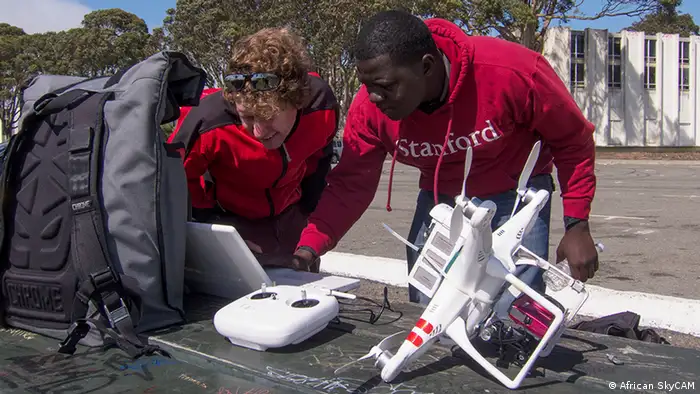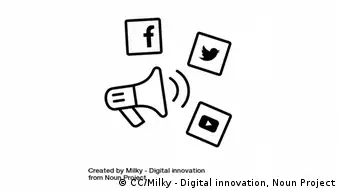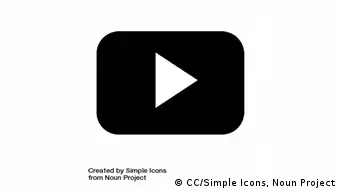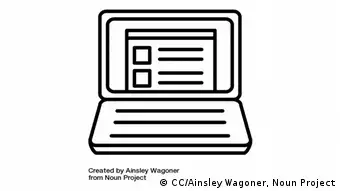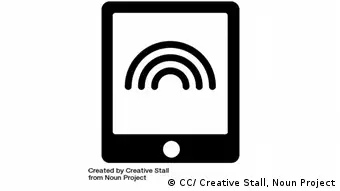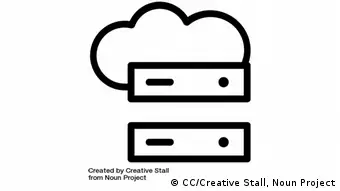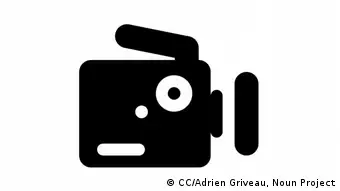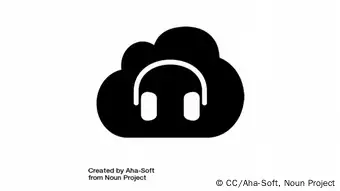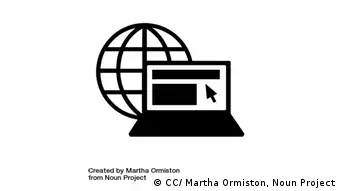In focus
Using digital technologies for freedom of expression
As digital technologies reshape our societies, media development projects have to keep up with the change. Which technology to adopt has become a crucial question for fostering Article 19.
Digital technologies have created many new challenges for media development. In particular, the range of possibilities provided by social media, mobile phones and online services are unprecedented in media history. Technically, people can have global access to information. The amount of information available to the masses is incomprehensible. At the same time, Internet security and monopolistic structures have created new dangers to freedom of speech and access to information.
But how do you decide which technology is best suited to the needs of your organization and your audience? To give an idea of the range of possibilities, the technologies below are all being used in projects in the Global South.
Social media
Social media is the general term used to describe the plethora of web-based applications that allow people to create, share and exchange information, opinions and ideas in virtual communities. Social media use Internet and mobile technologies to create interactive platforms where individuals and communities share, co-create, discuss and modify user-generated content. They are a cheap, easy-to-use way for people to access and share information. Twitter, Facebook and Google+ are all good examples of social media applications that are widely accessible and have a global reach, thereby enabling large-scale collaboration (people working together) and sharing of information.
However, it is necessary to be mindful of the dangers of using social media as well. Social media conjure up many different types of data security and access to information issues. These platforms are run by businesses after all.
The data provided in these applications is no longer private and can become compromised. There is also the contentious situation of social media platforms, such as Facebook, becoming the only avenue for access to the Internet in the Global South, which raises the question how free and impartial access to information will become.
Media projects can use social media to reach current and new audiences. They can also use it to collect and collate data, to crowdsource information and to develop platforms for discussions on certain topics. Social media can also be used as advocacy and lobbying tools to raise awareness amongst the general public of a specific issue. What is vital is to ensure that you have carried out enough audience research to know which platforms (if any) they are using. Follow the Money in Nigeria uses Twitter and Facebook to raise awareness about government grants that have not been disbursed to rural communities. Then they create online momentum in putting pressure on the Nigerian government to release the funds.
YouTube/Soundcloud
YouTube and Soundcloud are online websites that enable people to upload and share videos and audio for free. A variety of businesses, artists, experts and organizations use them to disseminate ideas and information to a wide audience. They are a great way for media projects to have a broad reach, to advance advocacy and to distribute video or audio content. Interviews, animations and films help engage people and share ideas. Nevertheless, they also bring up the data security issues mentioned under social media.
263 Chat in Zimbabwe is a social media project that organizes online discussions about topical issues in Zimbabwe. It then makes short five minute videos about those discussions and shares them on YouTube. This ensures that they reach a wider audience and are able to respond to issues deemed important by people within the country.
Ushahidi platform
Ushahidi is open source software from Kenya that enables users to collect information and then visualize or map this information. It was developed as a way to map violence that occured after Kenya's election in 2007.
It uses crowdsourcing to collect information (normally of a socially relevant nature) to call for public accountability and enables the combination of social activism, citizen journalism and the collation of information. Ushahidi makes it easy for people to submit reports (for example, by using their mobile phones or online) while simultaneously creating a map of what is being reported. This can be a useful tool for projects pursuing access to information and freedom of expression agendas because it provides a platform for sharing publically important information in a visual way and raising awareness within a specific context. HarassMap in Egypt is a project that maps incidents of sexual harassment in the country through mobile and online reporting that is automatically updated on a map using Ushahidi.
Mobile phones
Mobile phones have been around for decades and new advancements in smartphones support a variety of additional services such as business, news, social and game applications and photography. Smartphones have revolutionized the way people interact with one another and have enabled people across the world to become connected; however, feature phones are still effective in reaching a wide audience. This is especially true in the Global South where rural communities and the poor now have access to cheap mobile phones and coverage that far exceeds that of landlines.
For media projects, the range of possibilities provided by feature phones and smartphones is endless.
They are a quick and cheap way to reach a wide range and remote group of people. With over six billion people owning mobile phones, they are a key technology for reaching people, sharing information and ensuring that marginalized groups are part of information exchanges and discussions that affect them. However, mobile phones and smartphones help reach very different audiences in the Global South. Whilst mobile phones are good for reaching the poor, especially in rural areas, smartphones are better used to address the urban educated middle class. For example, Mera Swasthya Meri Aawaz uses an SMS messaging service with marginalized women in northern India for reporting on illegal maternal health service charges and corruption within the maternal health system while the Brazilian newspaper "Extra" uses Whatsapp running on smartphones to engage with its audience.
Tablet computers
Tablet computers are compact mobile computers that are interactive with touchscreens and have capabilities such as inbuilt cameras and microphones that make them ideal for roving reporters and journalists who are capturing stories on the go. Modern tablet computers are high specification and the sound and picture quality is generally good. Tablet computers are much cheaper than laptop computers, easier to transport and often have a longer battery life. They are therefore a useful technology in the Global South where electricity can often be sporadic. Our Health is a healthcare project in South Africa that provides citizen journalists with tablets for monitoring and reporting on the implementation of the country’s health insurance scheme.
Online database
Online databases are organized collections of information that provide users with a logical and systematic way to store and retrieve data. Online databases are basically large electronic libraries that facilitate the easy storing, searching and adding of information online.
They also make data accessible to many people simultaneously. How a database is configured is decided by the needs and desires of producers and users. Therefore databases can be designed to meet varying requirements. These are a good way for data checking to be organized and managed by media projects especially using crowdsourcing. VozData is a data digitalization project in Argentina that uses volunteers and university students to transcribe thousands of government documents from PDFs into digital data using an online database. Thus it enables the general public to access and assess this information and create a public forum for data sharing and accountability.
Camera equipment
Using digital camera equipment to capture still and video footage makes it possible to review this footage instantly and upload it wirelessly to the Internet providing smooth and quick reporting. Thus reporters or activists can put their footage online before security or police can seize the equipment. Sharing information in a visual form is a key tool for media and is not something new. The new opportunities arising within digital camera equipment is twofold. The quality of the images being captured by new camera technology is improving all the time and what we are being able to capture is also expanding. Unmanned aerial vehicles (drones) are now able to carry cameras and shoot unprecedented footage from the air, giving audiences a chance to see their world in a completely new way. African SkyCAM is a Kenyan project that tested shooting aerial footage with drones with the hope of changing media coverage of such events in the country (Kenya has since introduced a ban on commercial drones).
Audio portals
An audio portal is a platform that enables users to leave and receive audio messages in a simple and easy way. They can be reached through the use of mobile phones and are an excellent option for gathering and sharing information with remote communities and illiterate groups. CGNet Swara connects marginalized communities in central India and share information relating to local politics, culture and social issues via the audio portal platform which the access through a toll free-phone number.
Website
Online websites may not be new but the way that they are being used to reach wider demographics and new audiences can be considered innovative. Being online gives organizations and businesses a platform to represent their work to the world.
They are often an effective and cost-efficient way to present ideas, collect, collate, analyze, share and publish information in a global context. Being online gives Africa Check, a fact-checking site that verifies statements made by public figures, the chance to independently distribute its content.
DW recommends
WWW links
- Date 15.03.2016
- Author Roslyn Kratochvil Moore
- Feedback: Send us an e-mail. Please include your name and country in your reply.
- Print Print this page
- Permalink https://p.dw.com/p/1ID0E
- Date 15.03.2016
- Author Roslyn Kratochvil Moore
- Send us your feedback.
- Print Print this page
- Permalink https://p.dw.com/p/1ID0E

